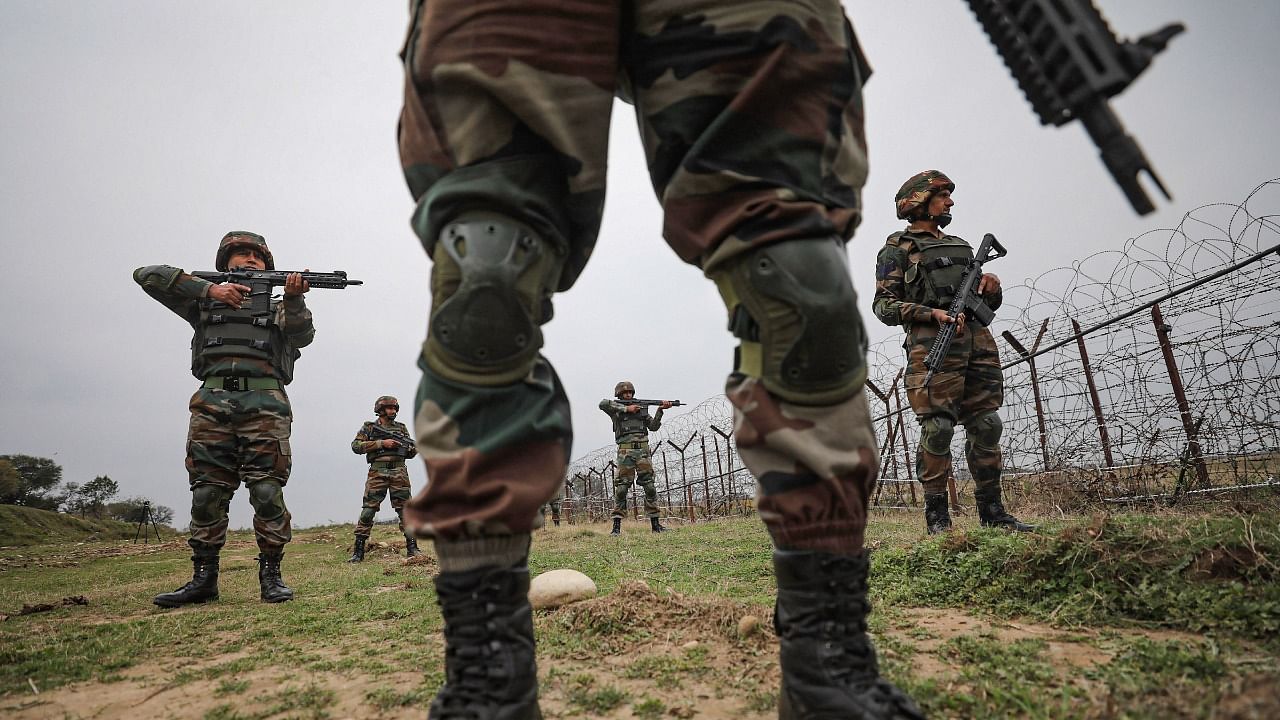
Photo for representational purpose
Credit: PTI Photo
Following the Leader of Opposition Rahul Gandhi’s raising of the issue of non-payment of compensation to the kin of an Agniveer martyr in the Lok Sabha on June 26 and the Defence Minister Rajnath Singh rebuttal, the matter has sparked a media debate. Many veterans are vehemently opposed to the scheme, though a segment offers support without reservation.
In his forthcoming book, General M M Naravane (retd) is reported to have disclosed that “Agnipath was a ‘bolt from the blue’ for the IAF and a ’surprise’ for the Army, which is a pointer to the fact that the stakeholders’ views were not given due seriousness, though Rajnath Singh in his rebuttal stated that 158 agencies were consulted before implementing it. Gen Naravane had recommended just 10% for short service, easing them out after a few years with no pension benefits, though they would leave with a substantial sum when discharged. Former Army Chief General Manoj Pandey stated that the Army units gave favourable feedback when the proposal was initially mooted.
Former Naval Chief Admiral KB Singh differed, arguing that the scheme will “degrade the combat effectiveness” of the defence services. Admiral Arun Prakash was against its implementation in the Army and Air Force, as he was of the view that it takes at least five to six years for a recruit to “acquire hands-on experience to be entrusted with the operations or maintenance of lethal weapon systems and complex machinery and electronics.”
The opinions of these chiefs could not have been ignored when the matter relates to the security of the nation. But the then dispensation chose to go ahead with its decision, with economic considerations overriding the concerns of national security. The responsibility of explaining the efficacy of the scheme to the opposition devolved on the former Air Chief Marshal R K S Bhadauria, who joined the BJP before the last Lok Sabha elections.
Under the Agnipath scheme, youngsters between the ages of seventeen and a half and 21 are eligible to join as Agniveers, subject to clearing written and physical tests and medical examinations. The scheme, effective June 2022, envisions an initial tenure of four years, after which 25% will be retained. The rest will be discharged with a substantial bounty. There is no denying that there will be intense competition among the Agniveers to get retained, making their lives more comfortable in the future.
The scheme envisages that 10% of vacancies in the Central Armed Police Forces (CAPFs) would be reserved for these Agniveers. Yet a large number will be left to fend for themselves, and without government assistance, they are bound to be frustrated. Here, the Directorate General of Resettlement (DGR) of the Defence Services will play a crucial role in this transition. The DGR will need to be strengthened to meet the growing demands of the Agniveers, who will be trooping out en masse from the three services. Rehabilitating thousands of Agniveers is going to be a monumental task, requiring the DGR to train and place them according to their skills, talents, and preferences. After the initial six months of training, Agniveers will join their units and perform duties like regular personnel. After three years, they will prepare for discharge, seeking other vocations unless they make it to the 25% retention in service.
Despite the willingness of the DGs of all CAPFs to welcome Agniveers, there is some resistance to their intake in the CAPFs. This resistance is understandable. CAPFs, comprising the Border Security Force, Central Reserve Police Force, Indo-Tibetan Border Police, and Central Industrial Security Force, had bitter experience for decades when hundreds of Emergency Commissioned Officers (ECOs) joined the CAPF after their period of engagement in the Army ended in the 1960s. While many joined as assistant commandants or deputy superintendents, several others were recruited as inspectors. Direct recruitment in the officer ranks through the UPSC and Special Selection Boards was also conducted. Soon began the tussle between the direct officers and the ECOs/Short Service Commissioned Officers (SSCOs). Since the released officers were not given the benefits of their past Army service, they knocked on the doors of High Courts and then began a see-saw battle, which ultimately led to their passing over several direct officers in seniority, though they were looked down upon as the rejects of the Army. A good number of them could make it to the rank of Inspector General, while direct officers had to bow out as Commandants or Deputy Inspectors General.
A similar situation could arise with Agniveers joining the CAPFs, potentially leading to court decisions that could disrupt the serniority of direct recruits in the CAPFs and disturb the complete seniority list. They will also be looked upon as the rejected lot of the Army, hurting their self-esteem and dignity. The hard life in CAPFs with no assurance of periodic peace postings as in the Army will add to their dejection.
If the defence services, particularly the Army, strive to keep the age profile young to fight the militants and the enemies across the borders, it is also of utmost importance that the age profile of CAPFs be kept young, as they too combat militancy and fight wars, as was done in 1965, 1971, and Sri Lanka as part of the Indian Peace Keeping Force. Despite the nature of duties in CAPFs being tougher and more arduous, they are not entitled to any pensionary benefits like their Army counterparts.
It is a small wonder that more youths are now lining up to be recruited in the CAPFs, as they are assured of serving in these forces till their superannuation. The Army’s loss is the CAPF’s gain.
(The writer is a retired Inspector General of Police, CRPF)